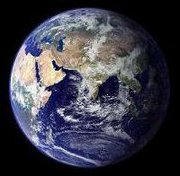Eurasia
|
|

Eurasia is the landmass composed of the continents of Europe and Asia. It can be considered a supercontinent, part of a supercontinent of Africa-Eurasia, or simply a continent. In plate tectonics, the Eurasian Plate includes Europe and most of Asia, but not the Indian subcontinent, the Arabian subcontinent, and the area east of the Cherskiy Range in East Siberia. Eurasia is also used in international politics as a neutral way to refer to organizations of or affairs concerning the post-Soviet states.
Jared Diamond, in his book Guns, Germs and Steel, credits Eurasia's dominance in world history to the east-west extent of Eurasia and its climate zones, and the availability of Eurasian animals and plants suitable for domesticaion.
The Silk Road symbolizes trade and cultural exchange linking Eurasian cultures through history and has been an increasingly popular topic. Recent decades have brought forth a view toward a greater Eurasian scope of history, establishing genetic, cultural, and linguistic relationships between European and Asian cultures of antiquity, which had long been thought of as distinct.
Europeans traditionally considered Europe and Asia to be separate continents, with the dividing line placed along the Dardanelles, Bosphorus, Caucasus Mountains, Ural River, and Ural Mountains, and this terminology has spread to the rest of the world, even though Asia contains multiple regions and cultures as large and populous as Europe, and as different and geographically separated from each other as they are from Europe.
Anthropologically, historically, and linguistically, Eurasia is more appropriately, though vaguely, subdivided into West Eurasia (often including North Africa) and East Eurasia, and they are further subdivided into regions like Europe, East Asia, South Asia, Central Asia, and Southwest Asia, which have distinct cultural, religious, historic, and linguistic differences. Alternatively, some historians perceive much of South Europe, South Asia, and West Asia as historically closer to each other than to their northern counterparts, creating a vague South Eurasia. North Europe and parts of North Asia create another vaguely similar cultural and geographic sphere known as North Eurasia.
In British English, Asian often refers to people from the Indian Subcontinent. This is in contrast to American English, where Asian tends to refer to East and Southeast Asians. This can easily be explained by the fact that the Indian subcontinent was historically the most important part of Asia from a modern British perspective, and that most migrants from Asia to the UK come from there, where as in the US, most Asian migrants traditionally tended to come from the Pacific-rim countries, thus the contrasting imageries of the Asian in the cultural imagination of both countries.
Subregions of Eurasia:
Other uses
People of mixed race whose parents are White and East Asian are called Eurasian, though this term was originally used for people of mixed Indian (South Asian) and European ancestry. See Anglo-Indian.
Eurasia was also a fictional country comprising approximately the same land area in George Orwell's Nineteen Eighty-Four, excluding the British Isles (controlled by Oceania) and Eastasia, the latter of which was formed ,as the novel says, by an alliance of the states of the region, being the most important couple China and Japan after a 'decade of confused fighting'. India was a contested border zone between Eurasia and Oceania.
See also
- Palearctic
- Laurasia, a theoretical supercontinent joining Eurasia and North America.

